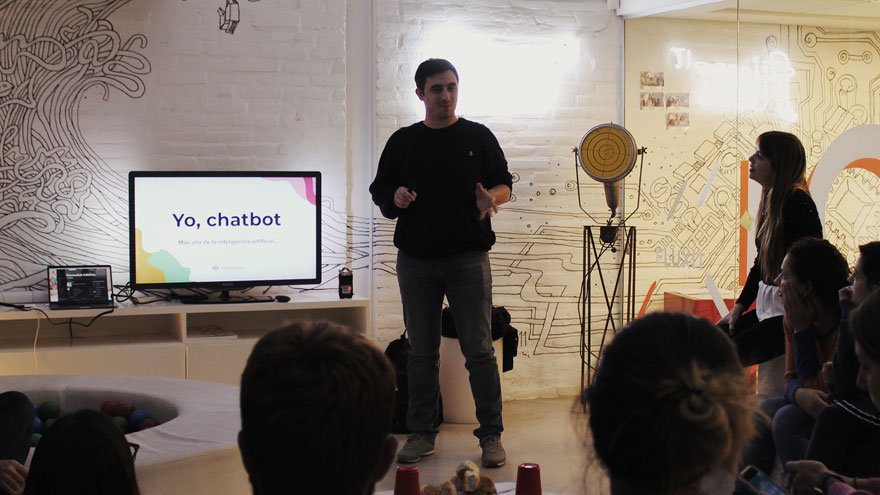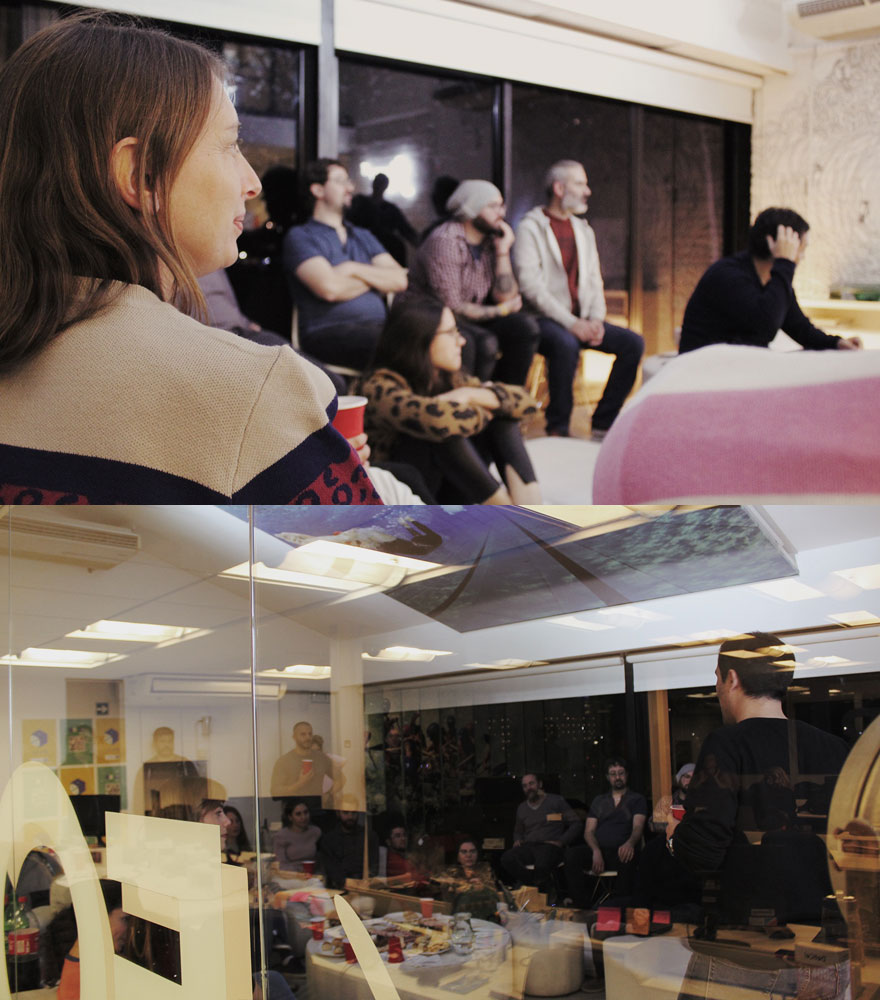Within the framework of the second Birra&Talks cycle, Emiliano Cosenza, UX writer, conversational designer and founder of Pannonica and Be Bot, visited Flux IT CABA’s offices (Autonomous City of Buenos Aires). In a relaxed atmosphere, he, fluxers and guests from the community reflected about conversational interfaces, a universe Flux IT has been venturing in since 2018 and that was celebrated on the same day with the launch of its first corporate chatbot.
“What keeps me up at night is how to make the machines, and in particular the chatbots, really connect with people.” That is how Cosenza introduced the topic and presented three key points to achieve it:

1. Conversation as an interface
Complementing graphical interfaces, interfaces with voice commands or conversations written in real-time are expanding to increasingly massive levels. In this sense, Emiliano reflected on the advantage of having language as his own interface, pointing out that in this experience the “learning curve” disappears, since speech is something everyone already knows: “Language begins to transform itself into the interface: not the objects, not the representations, not the symbology. Talking is what allows me to work with the machine.”
Regarding the symbolic power of language in the creation of mental images, Consenza demonstrated the importance of having awareness around the use of words, as main components of conversational interfaces. Thus, he explained that “each word makes a difference,” this being an advantage for operating on differentials but also a risk if they are misused, breaking the “spell” of credibility with the digital product.
2. Value
In a context in which chatbots are already installed as digital products, the specialist argued that the main mission when designing them is to connect them to users and the organization (business), working hard at that crossroad.
“To achieve a value chatbot, it needs a goal (more on the business end) and a purpose (more on the client end, a more human reason for being). When the purpose of the chatbot is clear, it starts to be useful and more authentic (because it communicates from its purpose), and is more scalable.”
3. Personality
After conceptualizing it as “a mysterious force where it is attracted or repelled,” Cosenza affirmed that personality is a critical element in the design of a chatbot, which contains the power to generate credibility: “Personality cannot be forced. How do we make that personality genuine? We need to understand that we are trying to unite people with people: those who design it with those who use it. It’s about establishing a link, connecting.”
To develop this point, Emiliano proposed a dynamic that involved all the guests, and in which two chatbots were compared, seeking to identify attributes of their personalities through questions from the users.
To conclude the meetup, Cosenza reinforced the points above, highlighting especially the attribute of “personality” as one that makes a chatbot unique and unrepeatable. “What good is it to be smart if nobody loves you?

RunRun Bot
At the end of the meeting, the speakers could meet RunRun Bot, the first corporate bot developed by and for the Fluxer community, aimed at facilitating the adoption of corporate processes to improve the staff experience.
The fluxers responsible for RunRun Bot shared their experiences, reflecting on the exploratory potential around the personality of the chatbots, as well as on the most convenient processes and protocols to accompany their relationship with users.